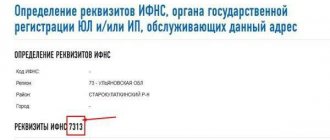Change of taxation system
If you are accustomed to a certain taxation system chosen at the beginning of your business, try to reconsider its effectiveness. Using information about assets and liabilities, a tax expert can calculate the amount of tax for different regimes. After solving the mathematical problem, you will be able to estimate the difference in the total amount of payments and make a decision on tax optimization.
Example:
Taxpayers on UTII and the simplified tax system “Income” can optimize taxes by reducing tax deductions by 50% by paying insurance premiums for employees. And entrepreneurs using the simplified tax system and special tax system can enjoy a 0% rate for 2 years if they meet the tax holiday criteria.
Is it possible to reduce VAT?
In accordance with the norms established by law, VAT is calculated:
- From the amount of revenue received from the shipment of items subject to taxation.
- From advance payments (receipts as prepayments).
The tax rate and application procedure are regulated by Art. 164 Tax Code of the Russian Federation. In 2017, for most enterprises it remained unchanged at 18%. How can I reduce the VAT payable by the amount of tax indicated by suppliers in the invoice? It is most difficult to optimize expenses for this tax. But there are ways. There are two of them:
- Reduce implementation.
- Increase deductions.
The only problem is to do it correctly. Otherwise - additional VAT charges, fines and penalties, and even more significant sanctions. In other words, by approaching the matter wisely, you can significantly reduce the amount of tax without breaking the law.
If you do not use VAT optimization methods correctly, you can be caught by the tax authorities and held accountable. It is better when a qualified accountant does this.
Deferment of tax payment
According to the Tax Code of the Russian Federation (clauses 1–3 of Article 64), a taxpayer can receive a deferment in the payment of one or more federal taxes for a period of up to 3 years. This is an effective way to optimize taxes in 2018, especially if your financial situation does not allow you to pay the tax within the deadline established by law.
A deferment for payment of taxes can be assigned:
- in case of damage caused by a natural disaster, technological disaster or other force majeure,
- in case of delay in budget financing or payment of government orders,
- if there is a threat of bankruptcy in case of tax payment,
- in case of production or sale of seasonal goods, works or services.
In addition, in some cases, the head of the company can take advantage of tax optimization through deferment of customs VAT payment when transporting goods across the state border.
Recommendations for tax optimization
When choosing the optimal method of tax planning and tax optimization scheme, it is worth considering several points.
In particular, such as:
- The need to carefully study the norms of current legislation . No entrepreneur will be able to effectively reduce the tax burden without understanding the provisions of fiscal legal acts.
- The need to monitor all ongoing changes in the field of taxation . New regulations, updating existing regulations, repealing irrelevant laws - everything must be taken into account.
- The need to plan and evaluate the results obtained . This is necessary for timely adjustment of the current company policy.
- Comparison . It is impossible to determine the best option without conducting a comparative analysis of all possible methods and forms.
The most important point is compliance with current legislation. No matter how attractive and tempting an illegal scheme may be, its use will lead to adverse consequences, one way or another.
Reducing the tax base
Some expenses help to optimize income tax:
- creation of reserves for doubtful debts,
- discounts and bonuses as part of non-operating expenses,
- increase in rental, maintenance and repair costs,
- payment for consulting services,
- purchasing uniforms,
- costs of training and retraining of personnel.
The list can be continued for a long time, however, it is more relevant for medium and large companies. Article 346 of the Tax Code of the Russian Federation states that individual entrepreneurs and micro-business managers using the simplified tax system “Income” can also carry out tax optimization and reduce the tax by the amount of:
- fixed payments to the Pension Fund and the Federal Compulsory Medical Insurance Fund for yourself,
- contributions to extra-budgetary funds paid from employee salaries,
- temporary disability benefits,
- payments for voluntary insurance.
If there are hired employees, an organization or individual entrepreneur using a simplified tax system can optimize taxes by 50%, and if they are absent, by 100% of the amount of fixed payments.
Legal ways to optimize taxation
One of the main goals of any enterprise is to make a profit. In order for profits to increase and the enterprise to develop, it is necessary to constantly improve business processes or optimize them.
Most enterprises follow the easiest path of development - they minimize their costs. And first of all, the biggest and most unnecessary taxes go under the knife. They are trying to reduce them, that is, to optimize taxes, in various ways. Moreover, sometimes they choose illegal methods and methods of optimization.
What is tax optimization? These are actions of the taxpayer, which consist in using the rights granted by law, exempting from paying taxes or allowing to choose the most profitable forms of entrepreneurial activity.
Legal ways to optimize taxes
1. Choosing the most profitable tax system.
This choice will determine what taxes and at what rates the organization will pay, what reporting and with what frequency it will submit.
2. Maximum use of tax benefits.
The legislation provides benefits in the form of reduced tax rates or complete exemption from paying payments to the budget, as well as tax holidays for start-up entrepreneurs.
Most of these benefits are accepted at the regional level, and many enterprises and individual entrepreneurs do not even know about them. If you learn about your rights and use them wisely, you can significantly reduce your tax burden, and in some cases, be completely exempt from paying taxes.
3. Develop a competent accounting policy.
The choice of accounting policy and its preparation is a very important point in the activities of an enterprise. What expense groups you write down in it, what reserves you create, this is how your income and expenses will be formed. When working correctly with accounting policies, the company itself regulates in what volume and period to accept income or expenses, when to pay more taxes and when to pay less.
4. Recruitment of personnel and involvement of third parties to provide services.
Sometimes, having entire departments on staff that are responsible for one or another area of work, you need to think: why do you need so many workers, how much work they do. After all, you pay them a salary and transfer considerable taxes from it.
At the same time, third parties can be hired to perform certain work, for example, legal support, computer equipment maintenance, or organization management.
In this case, your benefit will be that you will legally be able to attribute amounts for services rendered to tax expenses, without accruing wages on these amounts and not paying taxes on them.
There are many ways to legally optimize taxes. The choice is up to you. But this must be done in advance and carefully so as not to cross the border of the law.
However, many organizations, hiding behind the guise of supposedly legal tax optimization, in fact simply avoid them. And there are many more such schemes and methods. Here are just a few of them.
Illegal ways to optimize taxes
1. Use of dubious counterparties (fly-by-night companies) in activities.
This illegal method consists of creating a formal document flow between the organization itself and a chain of shell companies to increase profit expenses and VAT deductions. Organizations using this scheme have learned to confirm input VAT during desk audits by submitting minimum reports for their imaginary counterparties and providing a package of documents for counter audits. In turn, tax authorities have learned to detect this.
2. Fragmentation of business by creating organizations and individual entrepreneurs in special modes.
Activities are carried out by several organizations and individual entrepreneurs using special regimes (STS, UTII, PSN). As a rule, the head of all organizations is one person or his immediate relatives.
This scheme is very popular, called a family business, and the courts very often side with the organizations. However, recently, judicial practice has been changing in a different direction.
3. Concealing income through the use of personal accounts of employees.
The company hides revenue from taxation by transferring funds from customers not to its current account, but to the personal accounts of employees.
4. Use of employees with individual entrepreneur status.
In this scheme, an employee of an organization suddenly becomes an individual entrepreneur, as a rule, with the “STS-income” tax system. Moreover, he continues to perform the same work, but not for a salary, but for remuneration under a contract for the provision of services (performance of work).
To summarize: organizations can always find a legal way to reduce the tax burden; they just need to choose this method correctly.
The main thing in the pursuit of profit and enrichment is not to forget that jokes with the state will not lead to anything good. Amendments to laws adopted this year regarding subsidiary liability, bankruptcy procedures, and unjustified tax benefits are another step to combat the so-called tax optimization.
It’s up to you to choose the method of tax optimization; try not to make a mistake and not lose your business as a result of this mistake. After all, if we consider the principles of running a legitimate business, there is a good saying: “Business, of course, cannot do without elements of cunning and games, but it never deals with theft.”
ARTICLE Zh.S. Selyanina, 3rd class adviser to the state civil service of the Russian Federation
Checking the integrity of counterparties
Verifying the integrity of counterparties remains the simplest method of tax optimization available to every entrepreneur. This technique is especially important for those who keep track of expenses - working on OSNO, Unified Agricultural Tax or the simplified tax system “Income - Expenses”. If the Federal Tax Service recognizes your partner or counterparty as dishonest, the costs of a transaction with him will not be taken into account when submitting reports. Thus, you will have to pay more taxes even if the financial transaction actually took place.
Optimization schemes for unified social tax and personal income tax
- Simplified taxation system (outsourcing, civil contract with individual entrepreneurs) (see article “Optimization of taxes paid from salaries”);
- Using cash from the entrepreneur’s cash register (donation scheme) (see the article “Entrepreneur helps to avoid cash withdrawal”);
- Bill optimization schemes (interest, discount) (see articles “Optimization of taxes paid from salaries” and “Use of discount bills to minimize taxation”);
- Dividend and bonus optimization schemes (see articles “Dividend schemes” and “Optimization of taxes paid from salaries”);
- Board of Directors (see article “Board of Directors - a tax planning tool”);
- Payment from special purpose funds (not from expenses);
- “Workforce support schemes”;
- All types of compensation, incl. for harmful and dangerous working conditions (see article “Saving on hazardous work”);
- Other optimization schemes (insurance, “disability”, use of offshore companies, etc., in total more than 20 different special optimization schemes) (see the article “How insurance salary schemes work today”);
- Sale of expensive property without personal income tax through contribution to the authorized capital of an LLC and retail sale (one of the options) (see the article “Scheme with contributions to the authorized capital”).
Optimization schemes allow you to save “salary” taxes with varying efficiency, up to complete savings with payments attributed to costs and the absence of additional expenses
Order a tax planning session
VAT payment
Companies can optimize value added taxes (VAT) - 10% or 18%. This can be done in three safe ways:
- Buy options that can be sold at any time without VAT.
- Sell property in order to pay off a debt to a creditor without VAT.
- Use the services of a transport company to reduce VAT from 18% to 10%.
Other methods of tax optimization through payment of VAT most often attract close attention from Federal Tax Service employees.
Legal optimization of VAT
The essence of tax optimization is to minimize tax payments and avoid penalties. This can be achieved through correct and timely payment of taxes.
The Tax Code of the Russian Federation presents the taxpayer with a choice depending on the specific economic activity. For example:
- A business entity can choose the tax payment option that seems optimal to it.
- If possible, the law allows you to choose a type of economic activity that is not taxed under Article 149.
- Another option for reducing tax payments is to carry out export operations:
The options for optimizing VAT tax payments described above cannot be subject to claims from tax authorities; they can be interpreted as competent planning of business activities, which allows achieving tax savings with the least risk.
The formation of profit centers in those entities that have a reduced tax burden also has a positive effect on the amount of payments. This method is considered the most popular and safest among Russian entrepreneurs.
Schemes for optimizing the single tax under a simplified taxation system
- Using a 6% rate instead of 15% if it is more profitable
- Withdrawal of the profit of a single tax payer at a rate of 15% to a payer (payers) of a “simplified” tax at a rate of 6% through payment for services, work, interest on debt obligations, rent, license fees, etc.
- Simple partnership (to bypass the established income limit) (see articles “Schemes using a simple partnership and a simplified taxation system” and “The need to pay VAT by members of a simple partnership in connection with the introduction of Article 174.1 of the Tax Code of the Russian Federation”);
- Selection of the wage fund and contributions to compulsory pension insurance, allowing you to halve the tax paid at a rate of 6%
Order a tax planning session










